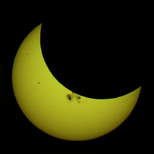Solar eclipse of July 29, 1878
| Solar eclipse of July 29, 1878 | |
|---|---|
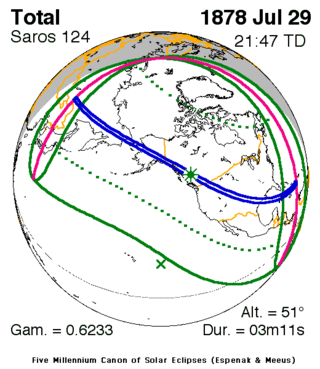 Map | |
| Type of eclipse | |
| Nature | Total |
| Gamma | 0.6232 |
| Magnitude | 1.045 |
| Maximum eclipse | |
| Duration | 191 sec (3 m 11 s) |
| Coordinates | 53°48′N 124°00′W / 53.8°N 124°W |
| Max. width of band | 191 km (119 mi) |
| Times (UTC) | |
| Greatest eclipse | 21:47:18 |
| References | |
| Saros | 124 (47 of 73) |
| Catalog # (SE5000) | 9230 |
A total solar eclipse occurred on July 29, 1878. A solar eclipse occurs when the Moon passes between Earth and the Sun, thereby totally or partly obscuring the image of the Sun for a viewer on Earth. A total solar eclipse occurs when the Moon's apparent diameter is larger than the Sun's, blocking all direct sunlight, turning day into darkness. Totality occurs in a narrow path across Earth's surface, with the partial solar eclipse visible over a surrounding region thousands of kilometres wide. This eclipse was visible at sunrise at a path across northeastern Asia and passed across Alaska, western Canada, and the United States from Wyoming through Texas.
Observations
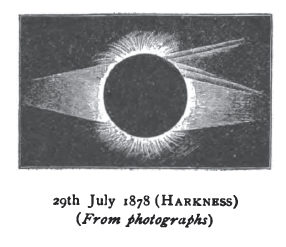 |
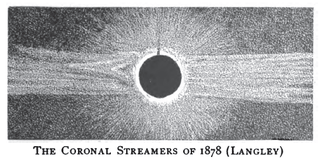 |
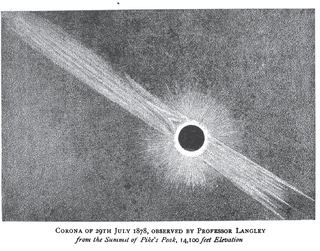 |
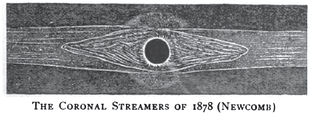 |
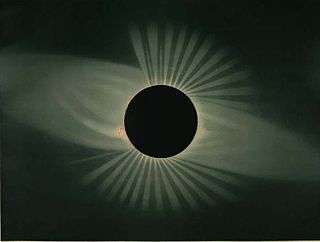 Étienne Léopold Trouvelot |
References
- NASA graphic
- Sketch of Solar Corona July 29, 1878
- Total Eclipses of the Sun, By Mabel Loomis Todd, 1894, new and revised edition by David P. Todd, 1900.
| Wikimedia Commons has media related to Solar eclipse of 1878 July 29. |
This article is issued from Wikipedia - version of the 10/20/2016. The text is available under the Creative Commons Attribution/Share Alike but additional terms may apply for the media files.
